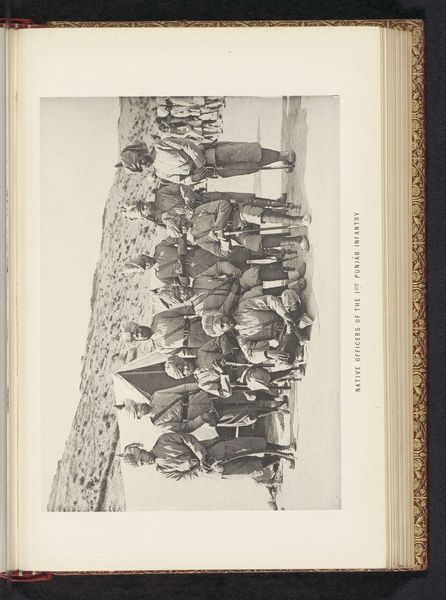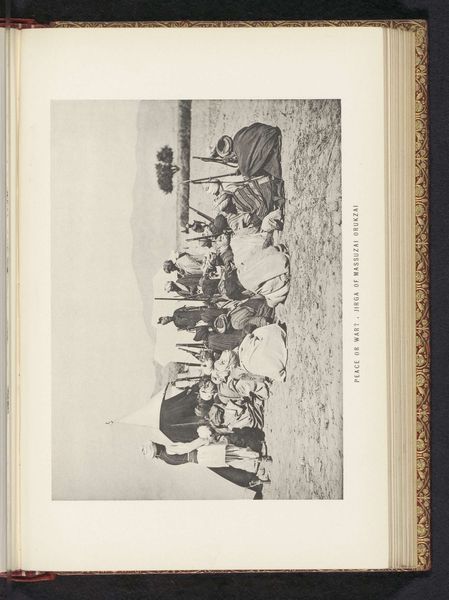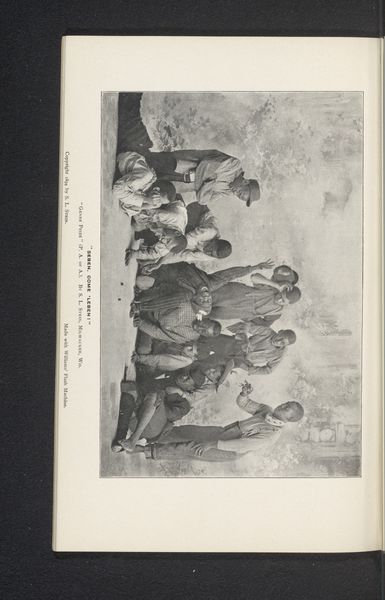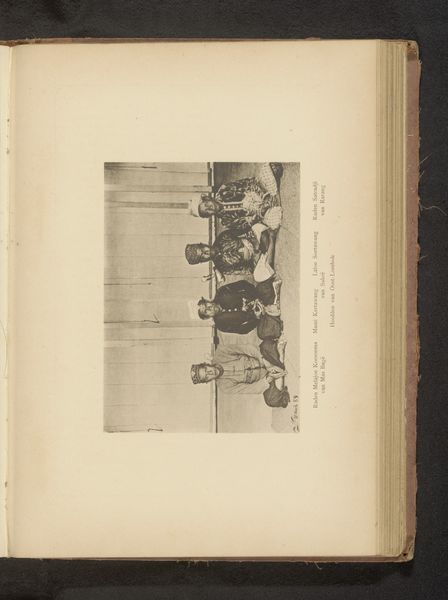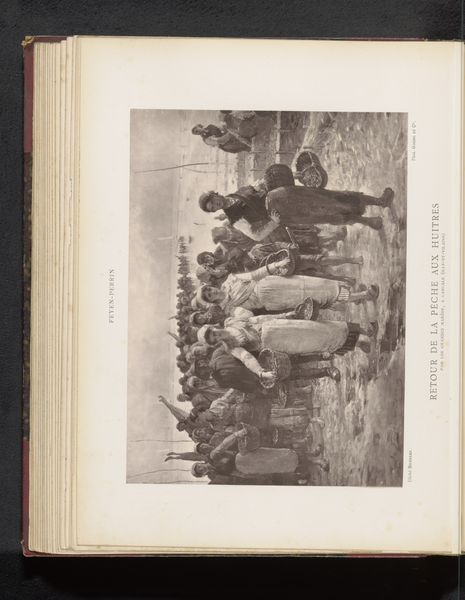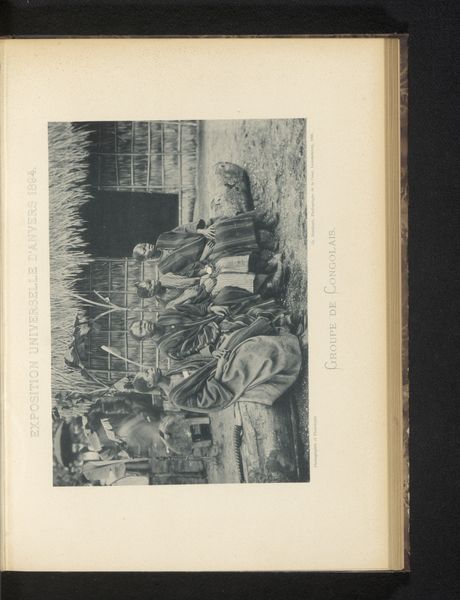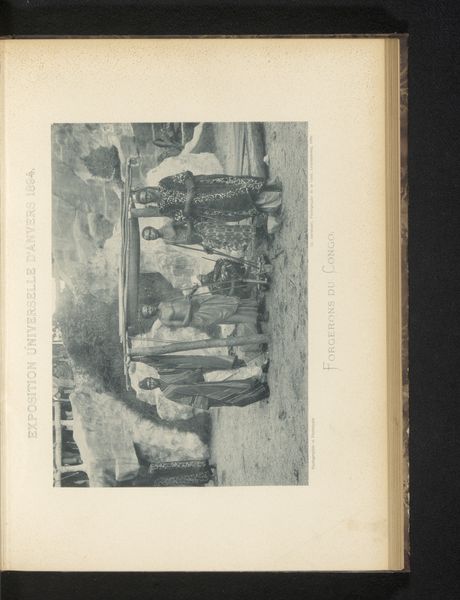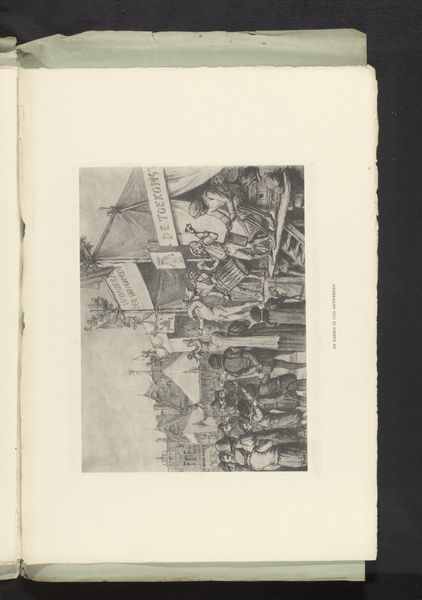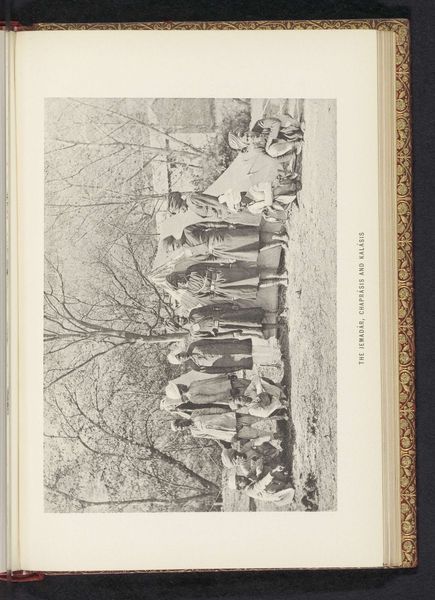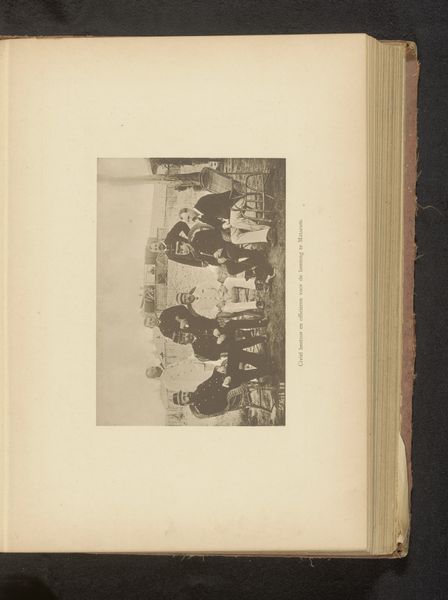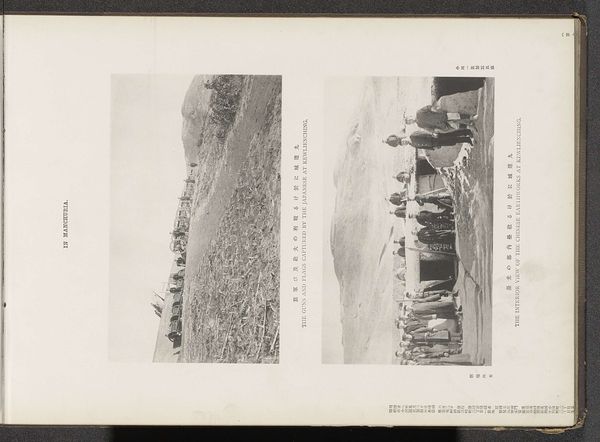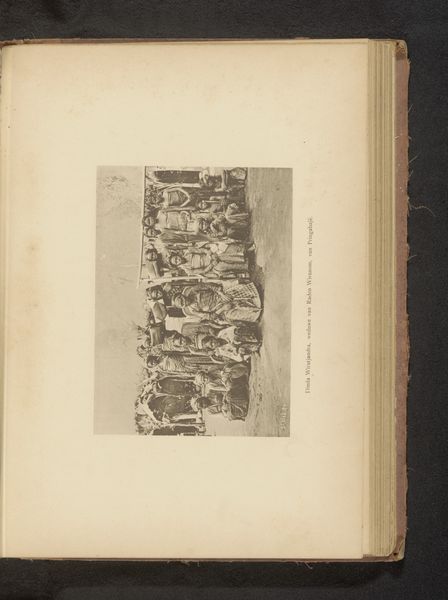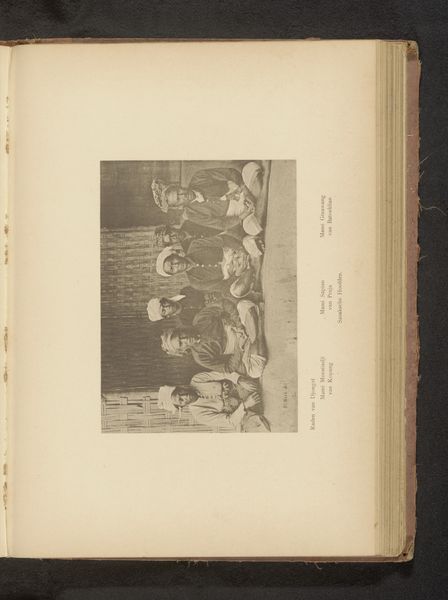
drawing, photography, gelatin-silver-print, graphite
#
portrait
#
drawing
#
landscape
#
photography
#
coloured pencil
#
orientalism
#
gelatin-silver-print
#
graphite
#
academic-art
Dimensions: height 117 mm, width 170 mm
Copyright: Rijks Museum: Open Domain
Curator: This is "The Political Officers in Kuram," dating back to before 1895. It is attributed to Frederick Saint John Gore and takes the form of a gelatin-silver print, also employing graphite and colored pencil. It depicts a row of seated men. Editor: The immediate feeling is… stiff. There’s a formal, almost lifeless quality to their arrangement and pose, accentuated by the grayscale and linear repetition of the subjects' weaponry and tools. Curator: Absolutely. These are likely portraits commissioned by or for the officers themselves, representing power and order in a region under British influence. The work fits into a broader tradition of Orientalist photography and its function within colonial administration and propaganda. Editor: Look at the texture though! The almost hyper-realistic rendering achieved through gelatin silver combined with colored pencils is fascinating. The materiality really brings out details in clothing, weapons. You almost feel you could touch the fabrics and understand the tools laid out on their laps. Curator: And those details are strategically deployed. The very act of meticulously documenting the officers’ uniforms, arms, and even their equipment serves to enforce an idea of British power and control to the Empire's function and efficiency to its British patrons back home. Editor: Exactly. Consider the physical process. To construct this image, each detail had to be made through light and its reaction to chemicals; someone crafted those supports. These weren't snapshots, but careful constructions. How many hours did they spend creating this single image and who was assisting them with that? Curator: Indeed. This wasn't just image-making; it was a strategic, time-consuming performance aimed at solidifying imperial ambitions and influencing the image of the colonizer back in England. Editor: I find myself now thinking about who made it, for what, and what survived versus what was used to get us to this object right here in our presence, our own now contemporary material, which could become nothing more than recycled scraps and metals, for something new... Curator: The context of its creation and circulation provides a window into the complicated power dynamics of the time. Seeing its function adds depth to the seemingly still image, as the social power it intended is a past we now view from a distance.
Comments
No comments
Be the first to comment and join the conversation on the ultimate creative platform.
